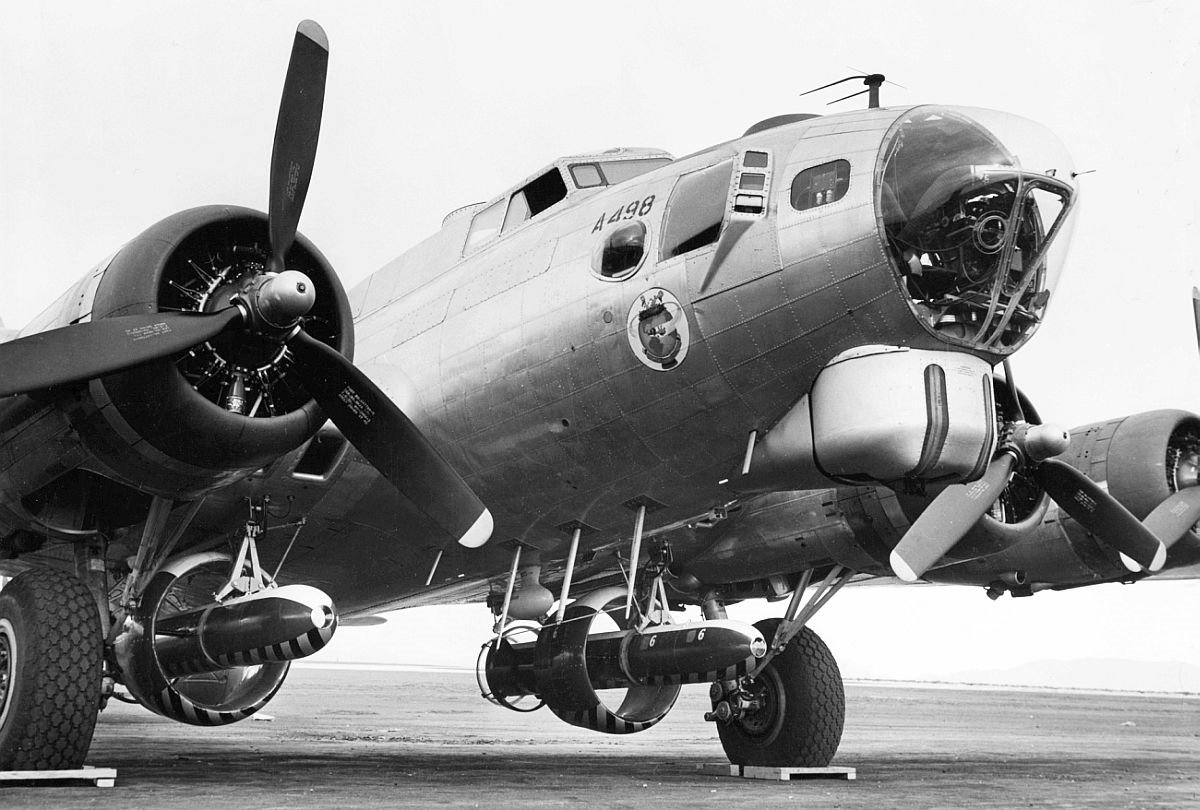I have not seen this photo before.

It is from the Douglas VB-9/VB-10/VB-11/VB-12 Roc family.
https://www.designation-systems.net/dusrm/app1/vb.htmlFound this:
The USAAF experimented with other VB weapons that never got out of the test phase:
The "VB-5" was a VB-3 RAZON, with a simple EO light contrast seeker.
The "VB-6" AKA "Felix" was a 450-kilogram (1,000-pound) bomb with an infrared heat-seeker for homing in on blast furnaces and the like. It had a single tail, and it is unclear if it had single- or double-axis guidance.
The "VB-7" and "VB-8" were both radio-controlled, with a bombardier targeting the weapons through a TV seeker. Details are unclear, and they may not have even been tested.
The "VB-9" through "VB-12" departed from the earlier weapons, since they did not resemble modified bombs. They were known as the "ROC" weapons. This name was derived from the great bird of THE ARABIAN NIGHTS, but also seems to have reflected a control algorithm in which the bomb "rocked" its wings to stay on course.
The VB-9 was another 450-kilogram (1,000-pound) glide bomb with relatively long cruciform wings and tail, and had an active radar seeker that turned out to work poorly against ground clutter. The later VB-10, VB-11, and VB-12 were of similar size, but used a circular airfoil and were fitted with TV, infrared heat-seeking, and radio command guidance systems respectively.
Source:
https://www.airvectors.net/avsmw2.html